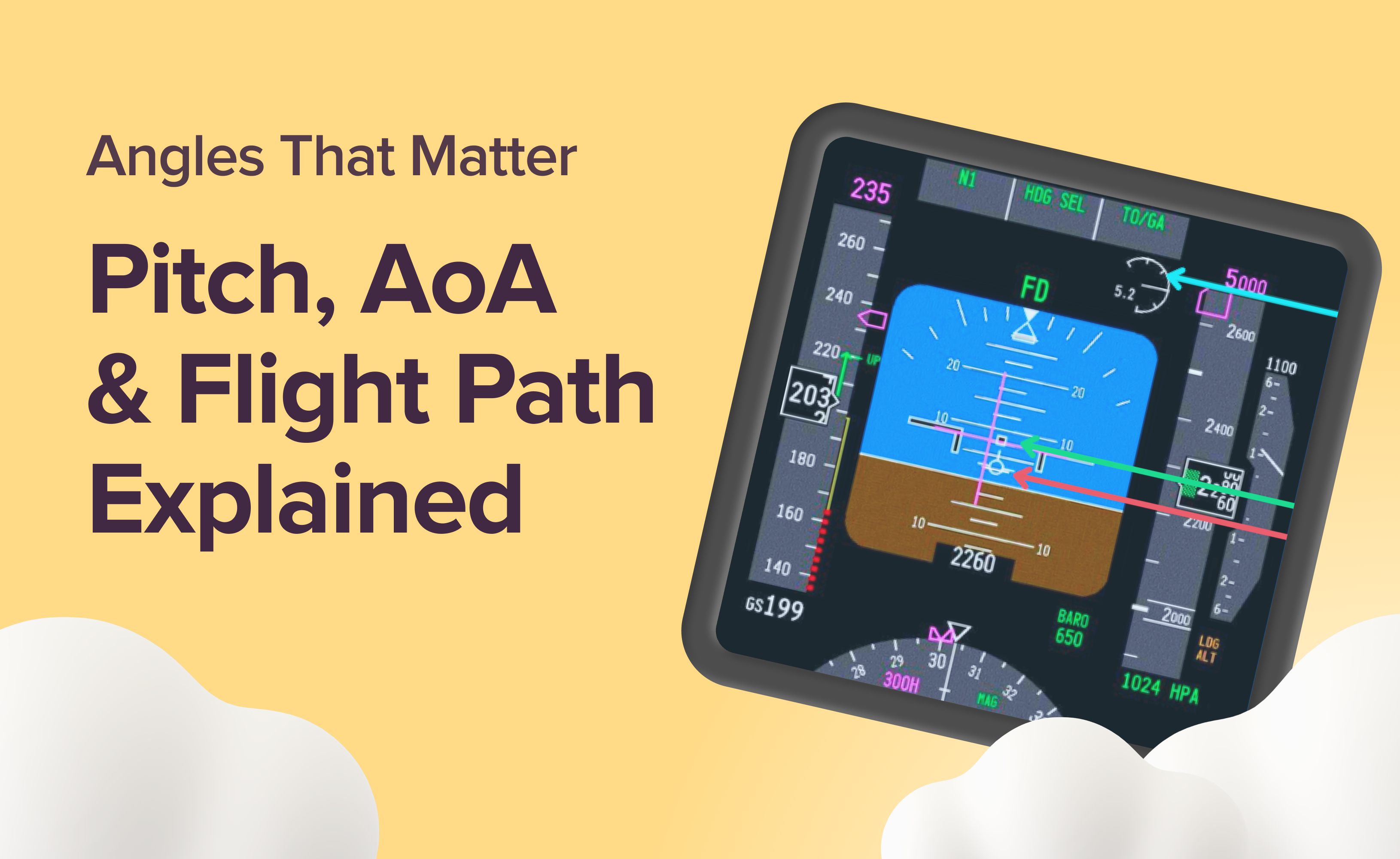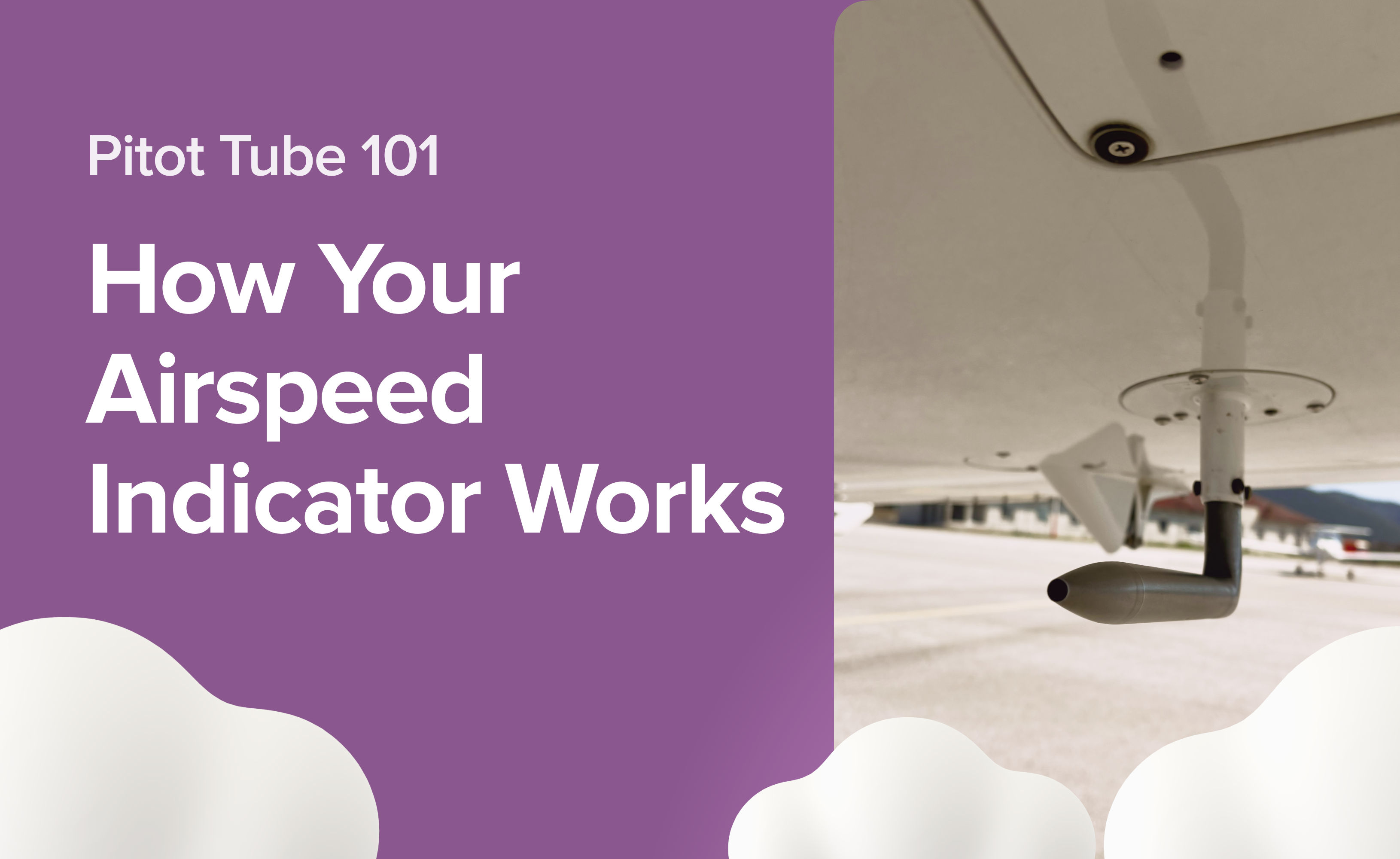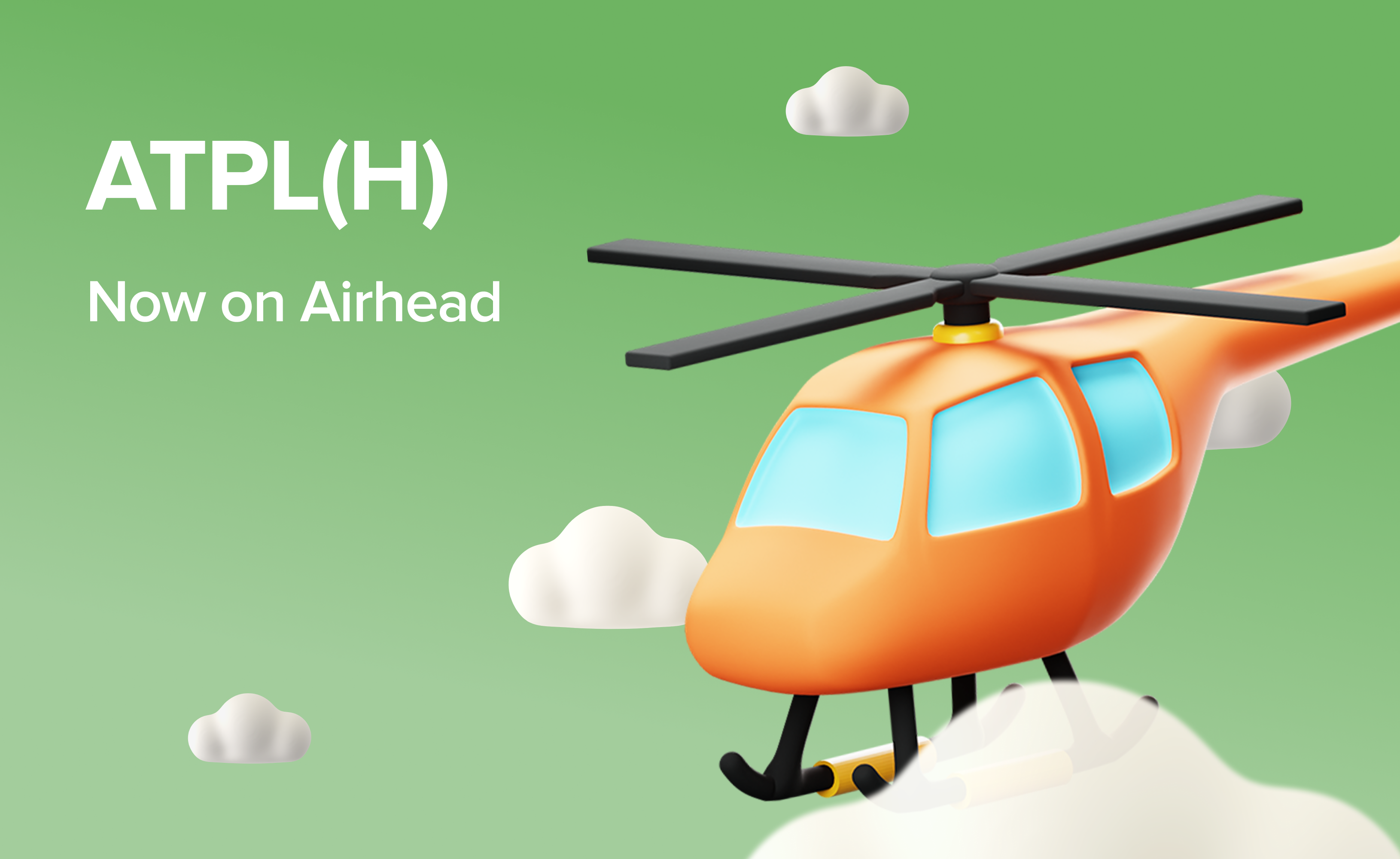Microburst: When the Sky Falls

It’s not the thunder that kills. It’s the silence that follows. Among the deadliest weather phenomena in aviation, microbursts are powerful, ultra-localised downdrafts that can slam into an aircraft during the most vulnerable phases of flight — final approach and landing. What makes them so terrifying isn’t just their power, it’s how suddenly they strike and how difficult they are to detect.
Microbursts have taken down commercial airliners and small GA aircraft alike. For student pilots and seasoned aviators, understanding how they form, how to spot them, and how to react isn’t just theoretical — it's survival.
That persistent left pull? It's pure physics. Dive into “Why Planes Pull Left: Understanding Propeller Forces” where we break down the 4 essential left-turning tendencies you must master for precise control.
What Is a Microburst?
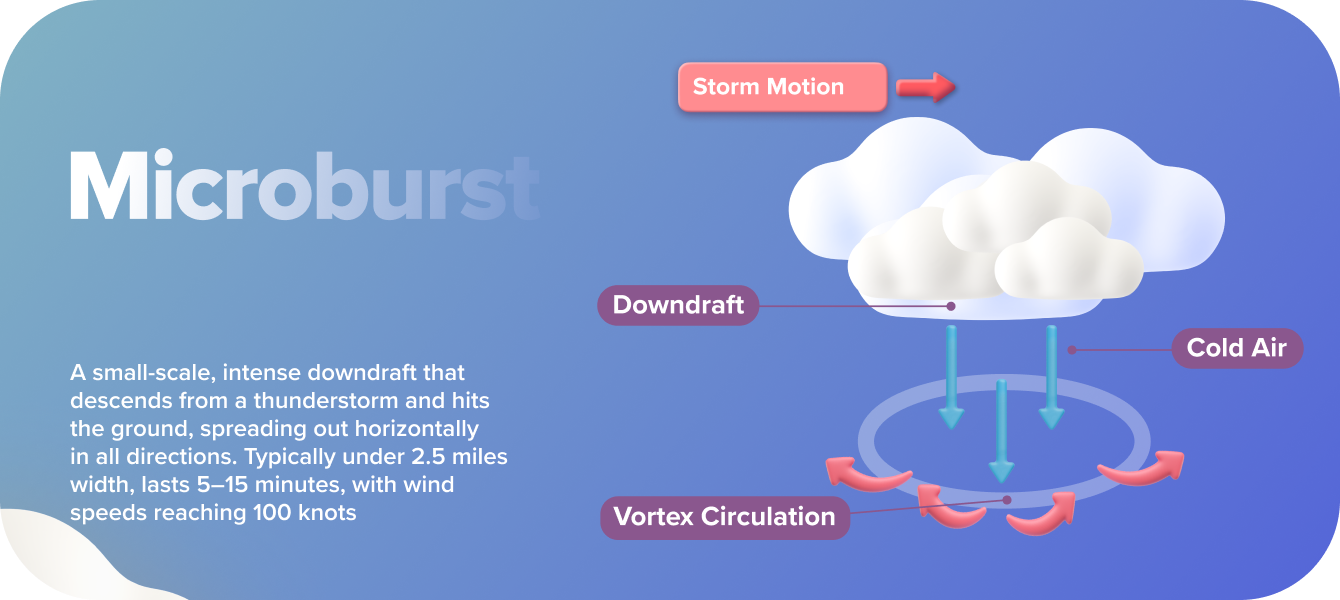
A microburst is a violent, small-scale downdraft of air that descends from a thunderstorm and impacts the ground with intense force. Once it hits the surface, the wind spreads out in all directions, often creating damaging outflow winds that can exceed 100 knots. While the footprint of a microburst is relatively small — typically less than 2.5 miles across — the danger it poses is massive, especially to aircraft during take-off and landing.
Despite their brief lifespan (typically lasting only 5 to 15 minutes) microbursts pack a punch. They are most dangerous because of the rapid changes in wind direction and speed they impose on aircraft flying through them, particularly near the ground.
Microbursts are classified under the broader category of wind shear, but they’re unique in their sudden onset, extreme intensity, and short duration. They are a leading cause of low-level wind shear events, especially in summer thunderstorms.
Ever wondered what a stall truly is? (Hint: It's not engine failure!) Our “Stalls Explained” blog demystifies lift loss in flight. Learn precisely why it happens and how to execute a smooth, confident recovery – turning fear into mastery
How Microbursts Form?
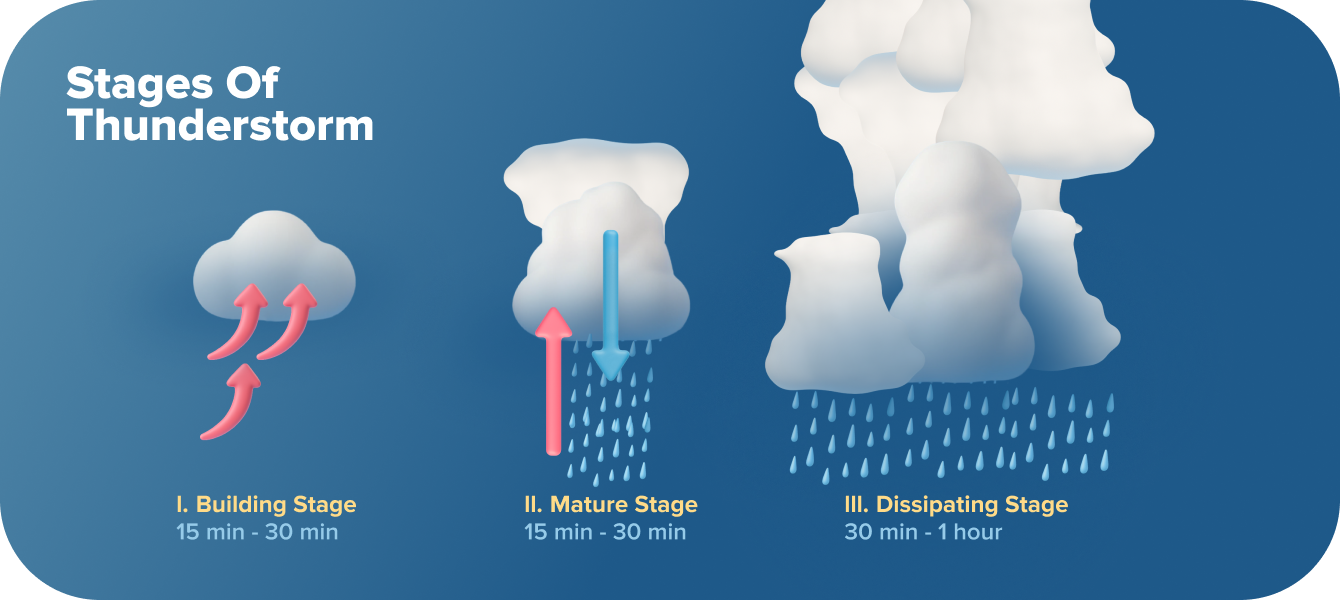
Microbursts are born from the intense inner workings of a mature thunderstorm. During this stage, the storm reaches its peak intensity — heavy rain, hail, lightning, and powerful updrafts and downdrafts dominate the cloud. But it’s the downdraft that sets the stage for a microburst.
Here’s how it works. As rain and hail fall through the storm, they drag surrounding air downward. At the same time, evaporation of precipitation cools the air further. Cooler air is denser and heavier, and gravity does the rest — this mass of cold, dense air plummets toward the ground at speeds of up to 6,000 feet per minute.
When that descending air hits the surface, it spreads out violently in all directions — much like water slamming into a floor. This creates a powerful burst of wind on the ground in opposite directions within seconds.
There are two main types of microbursts:
Dry Microbursts: Common in arid regions. Rain evaporates before reaching the ground, but the cooled air still plunges downward.
Wet Microbursts: Typical in humid environments. Heavy rain reaches the ground, accompanied by the intense downdraft.
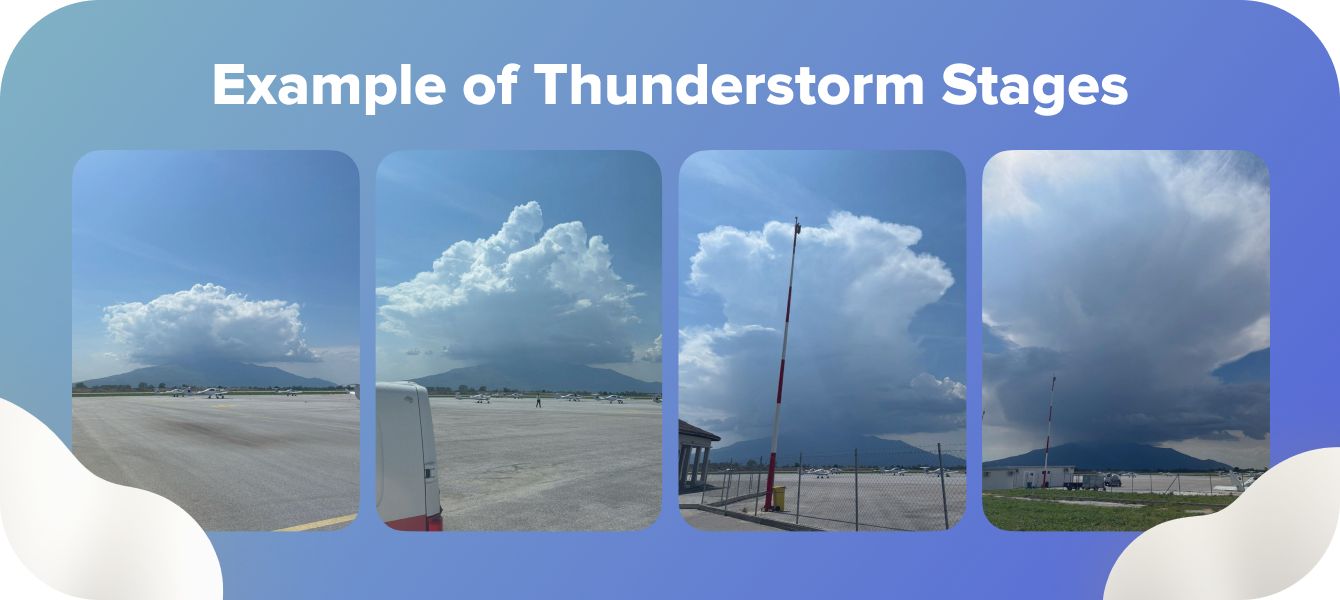
What Happens When You Fly Through a Microburst?
Imagine being on final approach — everything feels stable. Then, suddenly, the aircraft gets slammed by a sequence of invisible wind shifts that completely unravel your glide path. That’s the deadly reality of flying through a microburst.
Here’s how the sequence typically plays out:
Headwind: As the aircraft enters the microburst, a strong headwind boosts airspeed and lift. It may feel like the plane suddenly climbs, even if the pilot doesn’t touch the controls.
Downdraft: Moments later, a powerful column of descending air pushes the aircraft downward. The descent rate spikes dramatically, and the aircraft starts to lose energy fast. This is where pilots often increase pitch or power in response.
Tailwind: Just seconds later, the headwind reverses into a tailwind. This is the most dangerous part. Airspeed drops sharply, and lift vanishes. The aircraft may now be pitched up with high drag, low energy, and little altitude left to recover.
The entire event can unfold in under 20 seconds. Understanding this sequence — and knowing what to expect — could be the difference between recovery and disaster.
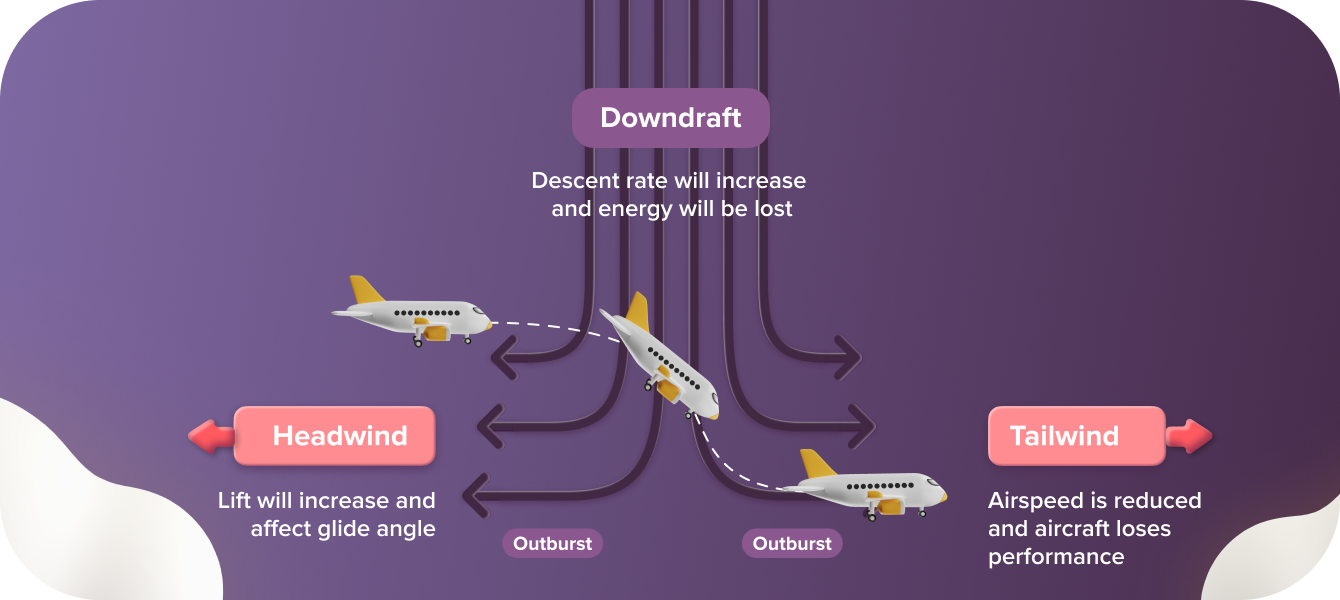
Flying through fog also demands knowledge. Our Pilot's Guide details the 6 common fog types crucial for safe operations under both Visual and Instrument Flight Rules.
How Microbursts Changed Aviation?
Before aviation had the tools to detect them, microbursts claimed lives — often with little warning.
The dangers of microbursts were tragically highlighted in 1975 when Eastern Air Lines Flight 66, a Boeing 727, crashed short of the runway at JFK. A powerful microburst overwhelmed the crew, who were late to correct the extreme descent rate, likely relying too heavily on visual cues. This accident, claiming 113 lives, underscored the critical need for instrument reliance and microburst awareness.
The most well-known microburst accident occurred in 1985 with Delta Air Lines Flight 191. A Lockheed L-1011 crashed on approach to Dallas/Fort Worth after encountering a severe microburst. The aircraft lost lift and hit the ground short of the runway, killing 137 people. It was a turning point in aviation weather awareness.
These tragedies led to major advancements in wind shear detection. Airports began installing Low-Level Wind Shear Alert Systems (LLWAS) and Terminal Doppler Weather Radar (TDWR), while aircraft were equipped with onboard predictive wind shear systems.
Most importantly, pilot training evolved. Today’s crews are taught to recognise the risks early, respond decisively, and go around if conditions look even slightly suspicious.
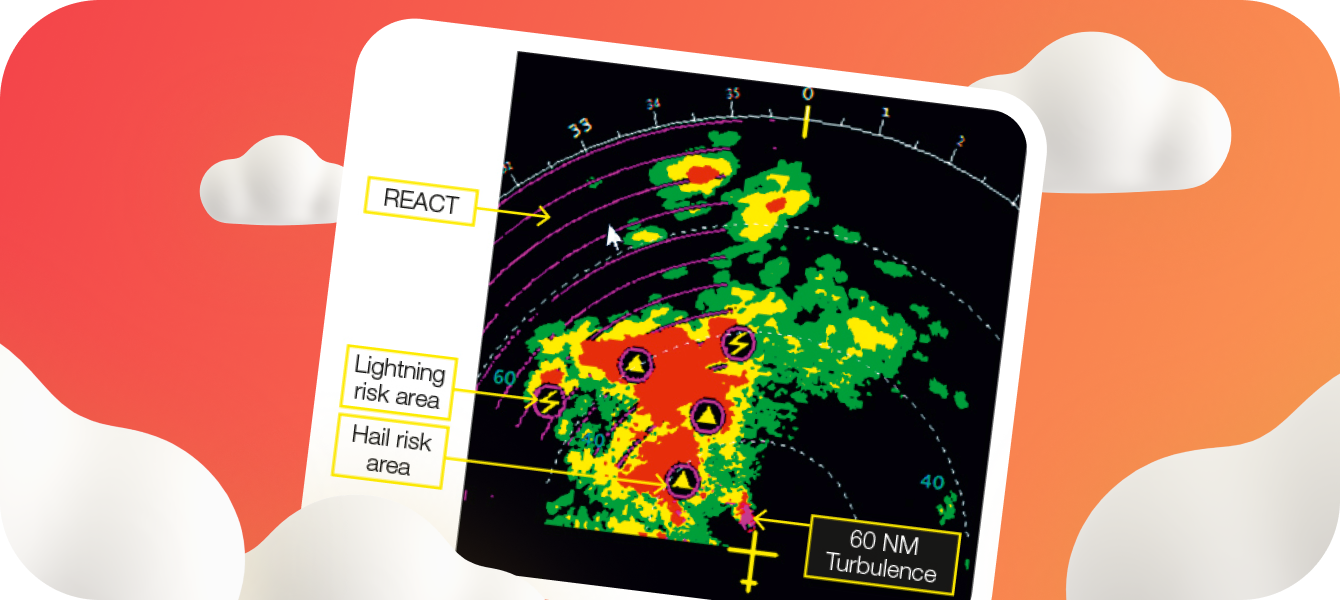
How to Recognise Microburst Risks?
Radar is great at detecting precipitation, but not always wind shear, especially if the microburst is dry or forming close to the ground. That means the most dangerous downbursts may not even trigger a warning until it’s already happening. But there are clues if you know what to look for.
Visual Cues to Watch For
Keep your eyes outside the cockpit and look for:
Virga: Rain that evaporates before reaching the ground. It often signals dry air aloft — a key ingredient in microburst formation.
Blowing dust or debris: A sudden circular pattern of dust on the ground can indicate an active outflow.
Ring-shaped rain curtains: Seen around the base of a thunderstorm, these outflow boundaries may mark a microburst’s edge.
Proximity to mature thunderstorms: If you're near the cell’s core during or just after the mature stage, conditions are ripe for a microburst.
What to Look for in METARs and TAFs
"WS" (Wind Shear): May be reported in METAR remarks or included in ATIS broadcasts.
Gusty winds with large directional shifts
CB (Cumulonimbus) or TS (Thunderstorm) nearby
Low-level wind shear advisories (LLWS)
If you see towering clouds, abrupt weather changes, and signs of strong outflow winds near the runway — pause. It’s not worth gambling with invisible danger. When in doubt, delay your approach or divert.
Fly safely across Europe: Our guide, See and Be Seen: Rules for Safe VFR Flying, breaks down the essential VFR rules you must know for confident piloting.
Stay Ahead of the Challenge
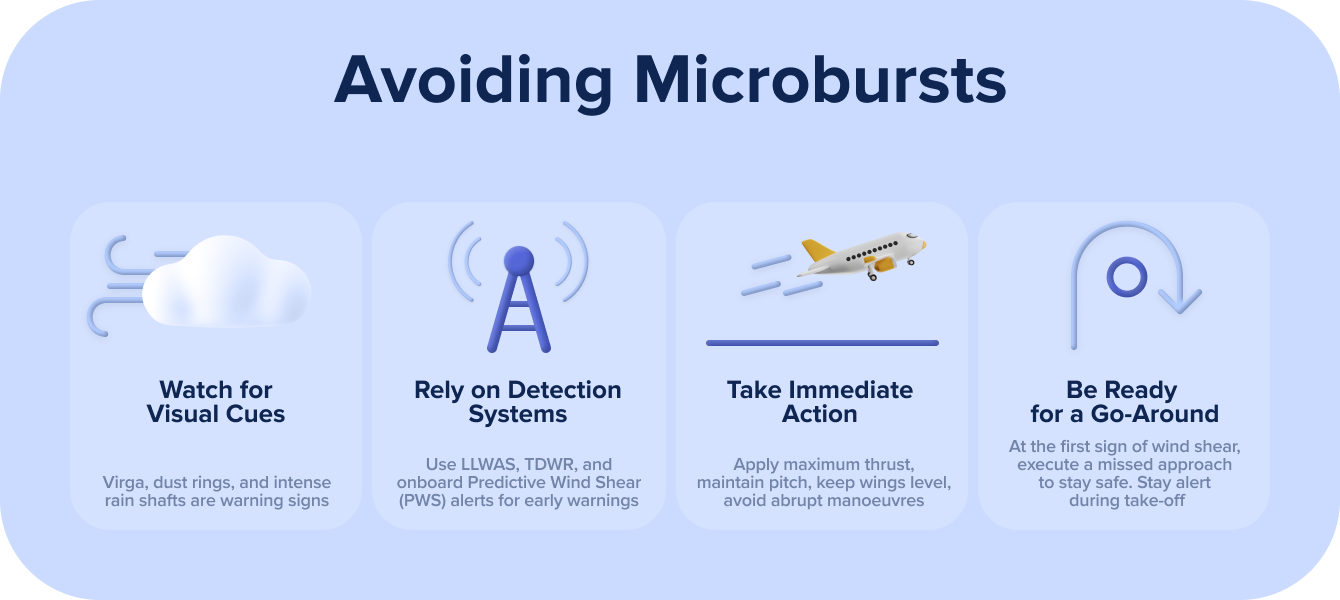
Watch for Visual Cues
Before technology catches it, your eyes might. Look out for:
Virga (rain that doesn’t reach the ground)
Dust rings or blowing debris
Intense shafts of rain
Any towering thunderclouds nearby, especially during the storm’s mature stage
Use Detection Systems
Modern detection tools are your frontline defence. Trust the tech:
LLWAS (Low-Level Wind Shear Alert System)
TDWR (Terminal Doppler Weather Radar)
PWS (Predictive Wind Shear) alerts from onboard avionics If you get a shear warning during final approach, go around—no questions asked.
Take Immediate Action
If you find yourself caught in a microburst: Apply full power. Maintain pitch — don’t chase the airspeed. Keep wings level and avoid steep turns or drastic corrections. The goal is to fly out of the hazard, not fight it aggressively.
Be Ready for a Go-Around
At the first sign of wind shear, abort the landing, climb, and reassess. During take-off, stay alert and be ready to reject or rotate with extra awareness.
Even if you never encounter a microburst firsthand, training to recognise and respond to one could save your life — or someone else’s.
Want to fly more intuitively? Click here for 8 Practical Rules of Thumb for smarter, more efficient flying.
7 Microburst Essentials to Know
Origin: Microbursts primarily form from cumulonimbus clouds, often from seemingly benign single-cell storms.
Formation Process: Heavy precipitation falling from a cloud creates a downdraft, pulled down by drag and intensified by evaporative cooling. This cooled, denser air then accelerates its descent.
Two Types: Dry microbursts are most common. All precipitation evaporates before reaching the ground, making them difficult to see and especially hazardous. Wet microbursts contain visible precipitation when impacting the ground.
Ground Impact: Upon hitting the ground (potentially at speeds up to 6,000 FPM), the downdraft spreads out rapidly, forming a dangerous vortex ring.
Low-Level Wind Shear (The Real Danger): As an aircraft enters a microburst, a sudden shift from headwind to tailwind occurs, causing a critical loss of airspeed and lift. This rapid performance decrease makes escape, especially close to the ground, extremely difficult.
Rule of Thumb: The total wind shear across a microburst is roughly double its peak outflow speed (e.g., 30 knots outflow results in 60 knots of shear). This dramatic change happens very quickly.
Avoidance is Key: Always steer clear of and divert around storms, visible virga, and rain shafts. Microbursts are short-lived but remain extremely dangerous, even during dissipation.








